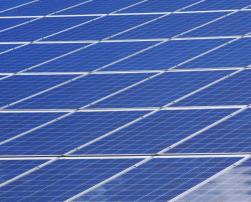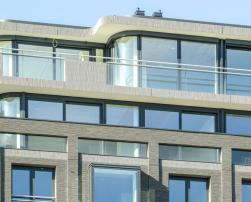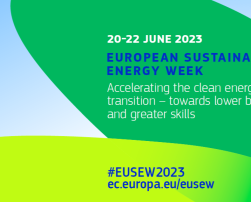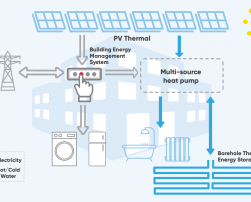
The EU plan to accelerate the implementation of renewables
Due to the current energy crisis, the European Commission has proposed a temporary emergency regulation to accelerate the deployment of renewable energy. According to the European Environmental Bureau, such decision would be done at the expense of environmental safeguards and democratic checks and create legal uncertainty.

How can the New European Bauhaus shape the future of the built environment?
The EIT Climate-KIC, alongside other KICs and partners, have been supporting the growth and scale-up of bottom-up projects through several programmes, supporting innovative climate projects.

De Hooch, il nuovo edificio residenziale ad Amsterdam con una particolare tipologia di vetro in facciata
L´edificio residenziale De Hooch, progettato da MVSA Architects, è caratterizzato da un particolare tipo di materiale in facciata: una tipologia di vetro a controllo solare ad alto isolamento, il quale è capace di assicurare il massimo livello di luminosità all’interno degli edifici e il minimo apporto di calore.
POWERSKIN+ Project: Switch2Save workshop
The POWERSKIN+ project coordinator Jorge Corker from IPN participated in the Switch2Save workshop on the 20th of October presenting the "Different approaches towards smart building envelopes designs – Examples of EU funded projects" segment of the workshop.
PLURAL Project: Switch2Save workshop
The PLURAL project coordinator prof. Maria Founti from NTUA participated in the Switch2Save workshop on the 20th of October with the talk entitled "Different approaches towards smart building envelopes designs – Examples of EU funded projects".
Retour sur le séminaire dédié à la 5ème génération de réseaux de chaleur !
Le 20 octobre dernier a eu lieu le séminaire dédié à la 5ème génération de réseaux de chaleur chaud – froid au Luxembourg, organisé par Ecotransfaire et Energipark Réiden, partenaires du projet D2Grids, qui a pour but de promouvoir cette nouvelle génération de réseaux (5GDHC).

Calls are open for the European Sustainable Energy Week 2023
An Info Session on the European Sustainable Energy Week (EUSEW) 2023 was celebrated on 29th November. Check more info here.
Irish Government agrees to the introduction of an obligation on the heat sector by 2024
The Minister for the Environment, Climate and Communications, Eamon Ryan, will introduce an obligation on the heat sector to include renewable heat by 2024.

Detailed assessment of the carbon savings possible today by applying smart combinations of existing solutions in the European building stock
The RES4BUILD project started in 2019 with the aim to decarbonise the energy consumption in buildings by developing integrated renewable-energy-based solutions. Using onsite renewable energy with decarbonised grid electricity, the RES4BUILD integrated energy system incorporates heat pump and combined Solar Photovoltaic-Thermal (PV/T) technologies with thermal energy storage and smart Building Energy Management System (BEMS) to produce low to zero carbon heating and cooling for buildings. This work is particularly relevant today, because while decarbonisation has been the main objective, decoupling from fossil fuels contributes to security of supply, while using on-site generated electricity contributes to affordability and decouples the heating/cooling costs from heavily fluctuating market prices.

Smart Control for Buildings Powered by On-site Renewable Energy
Consortium partners VITO-Energyville and Demokritos are modelling the behaviour of the various RES4BUILD system components – heat pumps, solar panel yields, long- and short-term heat storage, and the building thermal mass. One of the ways to model a building’s thermal mass is to estimate the indoor temperature given the ambient conditions and the inputs i.e. outdoor temperature, solar irradiance incident, heating/cooling. The project’s approach uses grey box models to approximate the building model by grouping various physical components together, and then identifying the parameters corresponding to the grouped components in a data driven way. They capture the thermodynamics to a certain extent but are also easily applied across buildings because of this data driven approach. Once ready, the models of the various components can be used in a framework for optimal control of the system to maximize self-consumption or minimize use of fossil fuels and costs.